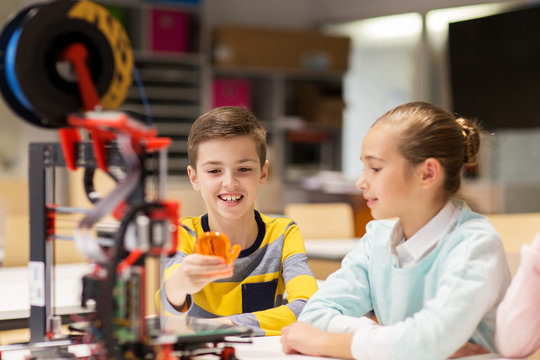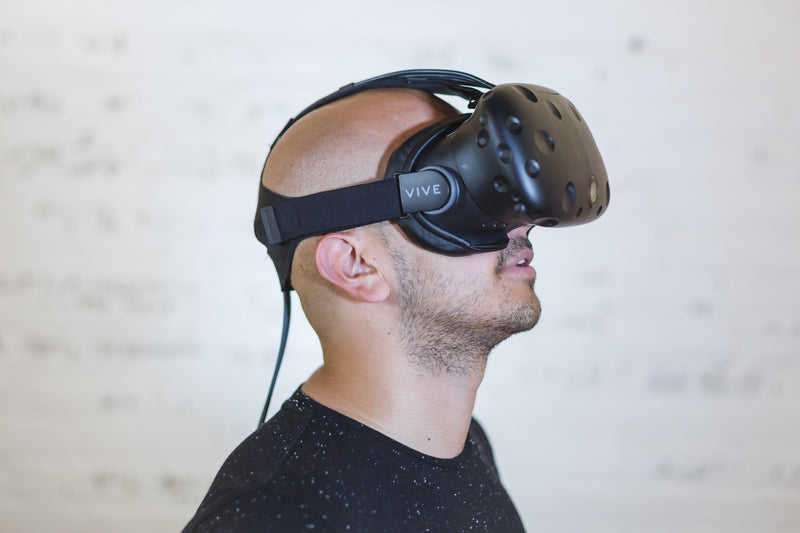As technology continues to evolve, it’s hard to predict what the future holds. But one thing is for certain: robotics and 3D printing are two key components that will shape the future of technology. Whether you’re an expert in the tech field or just a casual observer, this blog post will take a deep dive into how these two advancements will impact the way we use technology in our everyday lives. So keep reading to find out more.
Robotics: What Does the Future Hold?
As the world becomes more digitized and advanced, robotics are poised to play an increasingly important role in both mainstream society and our economy. Robotics has already made significant inroads into a range of industries, from manufacturing to aerospace engineering. It is safe to say that their future is very bright!
One of the key areas where robotics is expected to take off is the area of 3D printing. Already widely used in prototyping and production, 3D printing will soon become ubiquitous due to its ability to produce complex objects rapidly and at a low cost. This could have a huge impact on both manufacturing and infrastructure, as well as create new opportunities for customization and creativity.
While Robotics undoubtedly hold great potential, there are also some possible challenges that researchers need to be aware of. For example, many people fear that robots could take jobs away from human beings – or even lead to widespread unemployment. However, with Properly designed policies in place – such as training programs for workers displaced by robots – it’s clear that this won’t be an issue anytime soon!
Artificial Intelligence and Automation: The Impact on Human Lives
Artificial intelligence (AI) and automation are rapidly evolving technologies that are expected to have a profound impact on human lives in the future. While there is still much debate surrounding the implications of these technologies, there are some clear benefits that will accrue to humans as a result of their continued development.
One of the most significant benefits of AI and automation is that they will help to improve efficiency and productivity in various sectors of the economy. For example, self-driving cars will reduce traffic congestion and make transportation more affordable for consumers. Similarly, AI-powered robots will help to automate tedious tasks such as factory production or data entry. As a result, more people will be able to enjoy the benefits of economic growth, such as increased income and job security.
In addition to improving efficiency and productivity, AI and automation are also expected to play a role in enhancing human cognitive abilities. For example, machine learning algorithms can be used to improve our ability to recognize objects or understand complex concepts. Similarly, autonomous robots can help people with disabilities to live more independently. As a result, people will be able to achieve greater levels of cognitive flexibility and independence.
Overall, AI and automation are expected to have a significant impact on human lives in the future. They will help to improve efficiency and productivity in various sectors of the economy, enhance human cognitive abilities, and reduce traffic congestion and costs associated with transportation.
3D Printing: Transforming Manufacturing and Design
The widespread use of 3D printing is already having a profound impact on manufacturing and design. The technology can help speed up the process of creating products, from prototypes to finished products.
3D printing is also being used to create custom parts and components. This can help reduce the cost and time needed to manufacture a product.
3D printing is also being used to create new designs and products. This can help improve the efficiency and quality of products.
Augmented Reality and Virtual Reality – A Revolutionary Experience
Augmented Reality and Virtual Reality are two of the most exciting new technologies on the horizon. They allow users to experience the world in a completely new way, by overlaying digital images onto their real-world surroundings.
Augmented Reality is a technology that allows users to see digital objects overlaid in their real-world environment. For example, you could see a map of your city overlaid with your actual surroundings. This technology is especially useful for navigation, as you can see what buildings are nearby without having to take out your phone.
Virtual Reality is a technology that allows users to experience a simulated environment, usually one in which they are able to move around freely. For example, you could be in a simulated jungle, or on a spaceship. This technology is particularly exciting for gaming, as it allows users to experience the world in a way that is completely different from reality.
Quantum Computing: Unlocking a New Level of Processing Power
Quantum computing is a new type of computing that uses quantum bits, or qubits. This new form of computing could lead to breakthroughs in many areas, including artificial intelligence and quantum cryptography.
IoT Becomes Ubiquitous as More Devices Connect to Networks
As the IoT continues to grow, more and more devices are connecting to networks. This has led to a flood of new possibilities for applications and services, as well as increased opportunities for cyberattacks. However, the advent of quantum computing could change everything.
Quantum computers can perform calculations at incredibly high speeds, which makes them ideal for tasks such as cybersecurity and data encryption. In fact, some experts believe that quantum computing could even lead to a renaissance in AI development. If this proves true, it would mean that IoT devices will increasingly become embedded into our everyday lives – paving the way for truly innovative innovations in technology
Biomedical Advancements in Healthcare Technologies
As medical technology evolves, so does our understanding of how to treat and prevent illness. In the next decade, technological advancements in healthcare will help to improve patient care significantly. One such advancement is robotics technology. Robotics are machines that can be controlled by human operators, allowing them to perform tasks that would otherwise be difficult or impossible for a person to do. For example, robotic arms can be used to administer treatment while surgeons carry out the surgery. Robotic technologies have already revolutionized various industries, and they will continue to do so in healthcare as well.
Another important biomedical advance that will impact healthcare over the next decade is 3D printing technology. 3D printing is a process of making objects from digital data files. The printers use layer after layer of melted plastic or other material until an object is created. This process has many applications in healthcare, including the manufacture of prosthetic body parts and implants. As 3D printing becomes more affordable and mainstream, it will play an increasingly important role in the development of new medical technologies.”
Cybersecurity Evolves As Technology Advances Forward
As technology evolves, so does cybersecurity. The future of cybersecurity is reliant on advancements in technology, as well as the evolution of human behaviour and international relations. In this article, we will explore how cybersecurity is evolving and what trends we can expect in the years to come.
One of the most important aspects of cybersecurity is prevention. We need to always be looking for ways to protect ourselves from attacks, whether it’s through malware detection or employee training. By constantly updating our defences, we can make sure that we are protecting our data while also mitigating potential risks.
Another trend we can expect in the future of cybersecurity is the rise of AI-powered threats. As machines become more advanced and able to learn on their own, they can become formidable adversaries when it comes to attacking networks and data stores. Organizations need to keep pace with these developments and invest in technologies that can help them defend against such threats effectively.
Along with advances in technology, another crucial aspect of cybersecurity is human behaviour. One example is cryptocurrency mining – an activity where computers are used to solve complex mathematical problems in order to verify bitcoin transactions and earn rewards in return. Cryptocurrency mining has created a new class of cyberattackers who use powerful computers – often hacked from organizations – to mine cryptocurrencies for financial gain (and sometimes political motives). While current methods for defending against cryptocurrency mining attacks are effective, organizations must remain vigilant as hackers continue developing new strategies designed specifically for this type of attack vector.”
Renewable Energy Sources Become Mainstream for a Greener Future
The future of renewable energy sources is looking brighter than ever. With the rise of electric vehicles and solar panels, the market for renewables is only going to grow. Already, renewables make up a large part of the energy mix in many countries, and this trend is only going to continue.
One of the main reasons for this growth is the fact that renewables are cheaper than traditional energy sources. For example, solar panels are much cheaper to install than traditional power plants, and electric vehicles are much cheaper to operate than gasoline-powered cars.
Another reason for the growth of renewables is the fact that they are environmentally friendly. For example, solar panels don’t produce any emissions, and electric vehicles don’t produce any emissions when they’re running in battery mode.
The future of renewable energy sources looks bright, and there are many reasons why this is true.
Tech Companies Embrace Blockchain Innovations
As the world shifts towards a more sustainable future, many tech companies are starting to embrace blockchain innovations. Blockchain is a distributed database that allows for secure and transparent transactions. It has the potential to make many processes in business more efficient and secure.
Some of the most notable examples of how blockchain is being used by technology companies include IBM’s development of a food safety tracking system using blockchain technology, Microsoft’s work on creating a global digital identification system, and Google’s plans to develop an affordable online storage platform based on blockchain technology. These developments underscore the fact that blockchain has immense potential not just for financial services but also for other aspects of our everyday lives.
Robotics Meets Big Data to Enhance Machine Learning Solutions
As we move into the future, we are seeing more and more robots being used in various industries. This is due to the fact that they are able to complete tasks faster and more accurately than humans. In addition, robotics are also able to work in difficult or dangerous environments.
One of the most important areas where robotics are being used is in the manufacturing sector. This is because they are able to produce products more quickly and at a lower cost than humans. In addition, they are also able to handle hazardous materials safely.
Another area where robots are being used is in the healthcare sector. This is because they are able to carry out tasks that are difficult or dangerous for humans. For example, they can be used to carry out surgery or provide medical assistance.
One of the biggest challenges that we face when it comes to using robots is data management. This is because they require a lot of data in order to function properly. In addition, they are also able to learn quickly which means that we need to keep track of their data constantly.
Fortunately, there are various technologies that can help us manage our data better. For example, blockchain technology can be used to store data securely and efficiently. In addition, machine learning solutions can be used to improve the accuracy of our data predictions.
Autonomous Vehicles Lead Open-Source Innovation Projects
As autonomous vehicles continue to make headlines, the future of transportation looks increasingly promising. In addition to improving safety and reducing congestion, autonomous vehicles could also lead to a host of other innovations.
One such project is OpenBionics, a nonprofit organization that designs and builds prosthetic limbs using 3D printing. OpenBionics has already created a number of prosthetic limbs that are controlled by the wearer’s own muscles, and it is working on a number of additional projects, including a bionic hand that can be controlled with just one finger.
Another project that is focused on improving transportation is the development of self-driving cars. Google has been leading the way in this area, but there are a number of other companies working on self-driving cars as well.
Overall, the future of technology looks promising, and there are a number of projects being developed that could have a significant impact on our lives.
The future of technology is an exciting one, with robotics, 3D printing, artificial intelligence, virtual and augmented reality, quantum computing, IoT, biomedical advancements, cybersecurity solutions, renewable energy sources, blockchain innovations and autonomous vehicles all leading the way. These advancements will shape the way we live and work in the future, providing us with more efficient and powerful solutions than ever before. As technology continues to evolve and develop at a rapid pace, it is essential that we stay ahead of the curve in order to reap the full benefits of these advancements.






